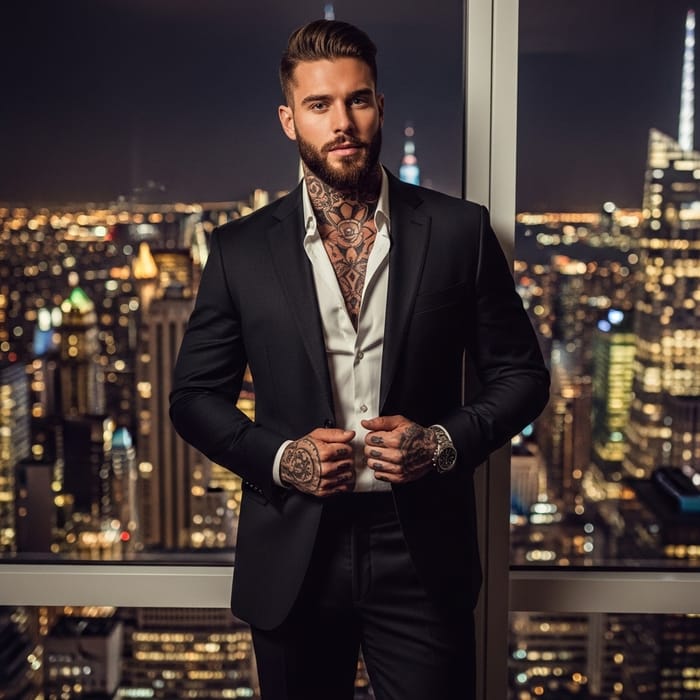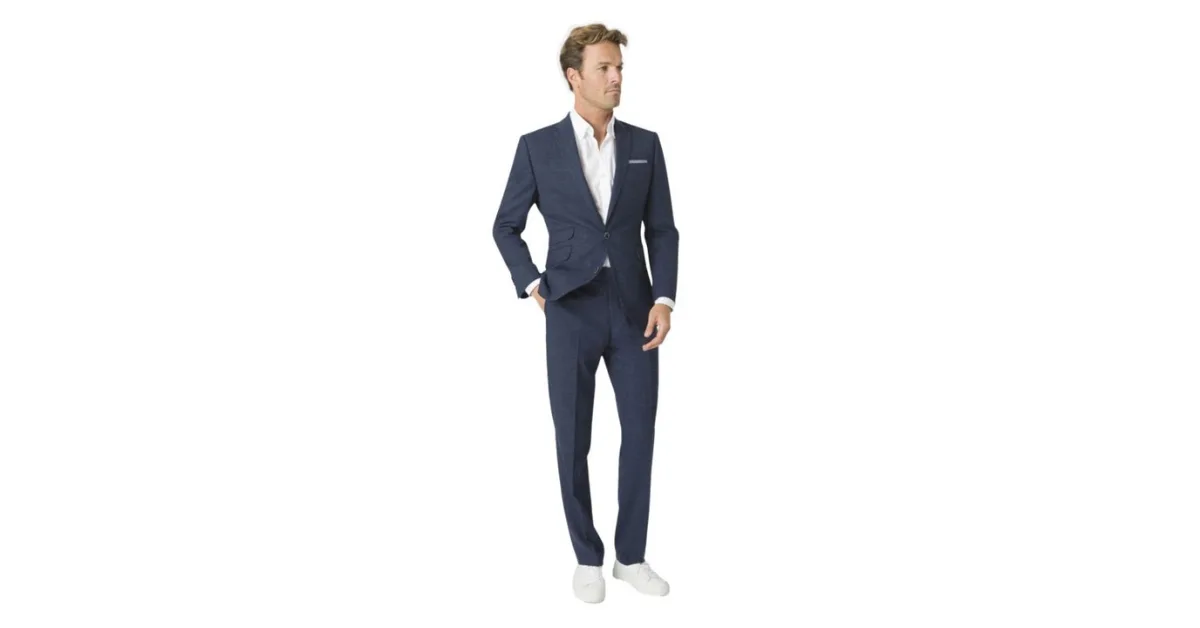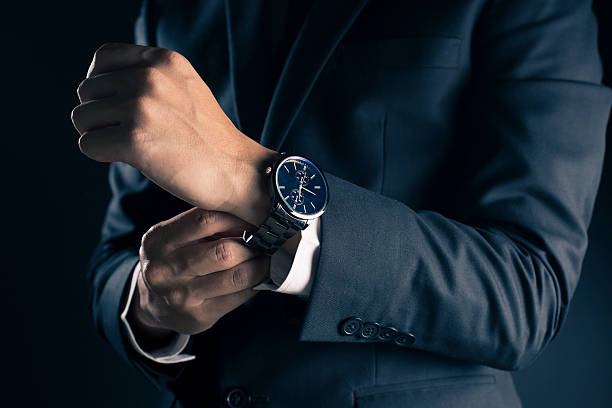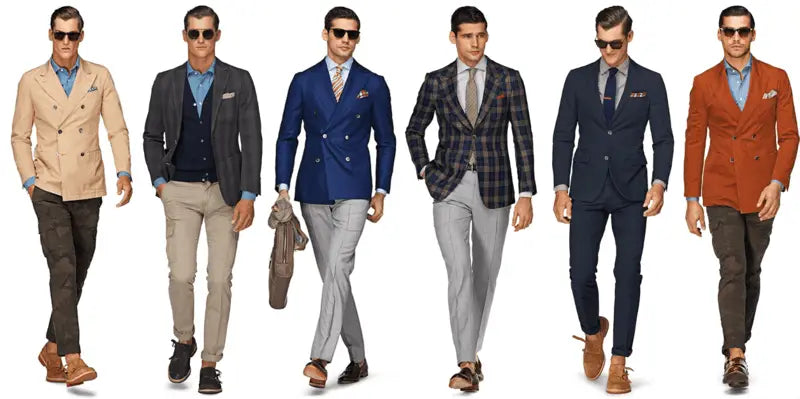Uncategorized
The Art of Men’s Formal Wear: Beyond the Classic Suit

The modern gentleman’s wardrobe is an ever-evolving landscape, yet one element remains a cornerstone of style: formal wear. For generations, the suit has been the ultimate uniform of professionalism and elegance. But in today’s world, formal wear is no longer confined to boardrooms and black-tie galas. It’s an art form, a way to express confidence and sophistication in a variety of settings. The key is to look beyond the classic suit and explore the nuances of modern formal attire, from the fit to the fabric and the accessories that make all the difference.
The Foundation: Understanding the Suit
A suit is more than just a jacket and trousers; it’s a statement. To master formal wear, you must first understand its core components.
- Jacket Styles: The two main styles are single-breasted and double-breasted. A single-breasted jacket, with one row of buttons, is the more common and versatile choice, suitable for both business and social events. The double-breasted jacket, with its overlapping front and two rows of buttons, offers a more classic, powerful look. It is often seen as a more formal and commanding choice. The number of buttons also matters—two-button jackets are the most popular, creating a V-shape that elongates the torso, while three-button jackets offer a more traditional, conservative feel.
- Lapels: Lapels can either be notched, peaked, or shawled. Notched lapels are standard on most business suits. Peaked lapels, which point upwards towards the shoulders, are more formal and are a key feature of double-breasted jackets. Shawl lapels, a smooth, rounded lapel, are exclusively for evening wear, most notably tuxedos.
- Fabric: The fabric of a suit dictates its drape, feel, and formality. Wool is the most common choice due to its durability, breathability, and natural wrinkle resistance. For summer, a linen or cotton blend provides a lighter, more relaxed feel. For a touch of luxury, a cashmere blend offers unparalleled softness and warmth. The weave of the fabric, such as tweed, flannel, or worsted wool, also contributes to the suit’s character and seasonality.

Beyond the Suit: The Rise of Stylish Separates
In many professional and social environments, a full suit isn’t always necessary. This is where the power of stylish separates comes into play. By pairing a blazer with different trousers, you can create a wide range of looks that are both refined and versatile.
- The Blazer: A navy or charcoal grey blazer is an essential investment. It pairs effortlessly with everything from tailored grey flannel trousers to dark denim jeans. The blazer’s versatility makes it a perfect piece for business casual settings, or for an evening out when a full suit is too formal. Look for one with a good structure and high-quality buttons.
- The Trousers: Forget baggy trousers. Modern formal wear is about a sleek, tailored fit. Trousers should sit comfortably at the waist and have a clean break just above the shoe. A pair of well-fitting wool or cotton chinos in a neutral color like beige, navy, or grey can be paired with almost any blazer.
- The Power of Color: While navy, grey, and black are staples, don’t shy away from incorporating other colors. A burgundy or forest green blazer can add personality to your wardrobe. Similarly, a pair of trousers in a subtle pattern, like a Prince of Wales check or a pinstripe, can make a bold statement when paired with a solid-colored jacket.

The Finer Details: The Art of Accessorizing
An outfit is only as good as its accessories. These small details are what truly elevate your look from ordinary to exceptional.
- The Shirt: The foundation of any suit or blazer-and-trousers combination is the shirt. A crisp white or light blue shirt is a classic choice for a reason—it’s clean, professional, and versatile. For more personality, consider a shirt with a subtle pattern like a micro-check or a fine stripe. The collar style is also important; a spread collar is great for wider tie knots, while a point collar is more traditional.
- The Tie: The tie is your chance to add color and personality. Silk ties are the standard for formal wear, with a wide range of colors and patterns available. The knot should be clean and proportionate to your collar. For a timeless look, a simple four-in-hand or a half-Windsor knot is always a safe bet. For more formal occasions, a full Windsor knot adds a touch of sophistication.
- Footwear: The wrong shoes can ruin an otherwise perfect outfit. For formal wear, leather dress shoes are a must. Oxfords are the most formal option, perfect for suits and black-tie events. Derbies are slightly less formal but still highly versatile. Loafers can be a stylish choice for business casual or summer events, especially when worn with tailored trousers and a blazer. Always ensure your shoes are clean and well-polished.
- Watches and Belts: Your watch and belt should complement each other, ideally matching in color and material. A leather watch strap and a matching leather belt create a cohesive and polished look. A high-quality watch is an investment piece that speaks volumes about your style and attention to detail.
- Pocket Squares and Cufflinks: These are optional but highly recommended for adding a personal touch. A pocket square, when folded neatly, can add a pop of color or a subtle pattern to your jacket. Cufflinks are a more formal choice and should be reserved for French-cuff shirts, adding a touch of elegance and sophistication to your look.

The Ultimate Rule: The Perfect Fit
No matter how expensive the suit or how luxurious the fabric, a bad fit will completely undermine your look. The perfect fit is non-negotiable.
- Jacket Fit: The jacket should fit snugly across the shoulders without pulling. The sleeves should end just above the wrist, allowing a small amount of shirt cuff to show. The jacket length should fall just below the seat.
- Trouser Fit: Trousers should be comfortable at the waist, with no need for a belt. The leg opening should be narrow enough to look modern, but not so tight that it bunches. The trouser break should be clean, with a single fold over the shoe.
- Tailoring: Even with a high-end suit, a tailor is your best friend. A good tailor can make small adjustments that transform a garment from “off-the-rack” to “made-for-you.” This is the single most important step in perfecting your formal wear.
The art of men’s formal wear is about more than just following rules. It’s about understanding the fundamentals and using them to create a style that is uniquely your own. By focusing on quality, fit, and the details, you can build a wardrobe that not only looks sophisticated but also makes you feel confident and ready to conquer any occasion.
